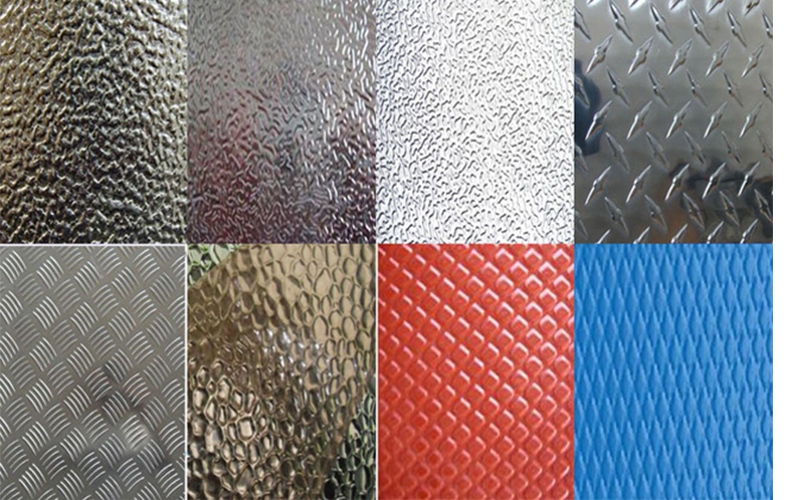Manufacturing Process of Aluminum Embossed Sheet
January 23, 2019
We often spot aluminum embossed sheet in public places. Plates of various surface designs lie in front of elevator doors, outside shops and even on dangerous drainage wells mouths in the middle of roads. Sometimes the traffic administration is too busy to deal with drainage problems in time and has to place a piece of embossed sheet over a well mouth in case that some pedestrians might ignore alarm notice and tread on the well by accident. As a curious person, I’ve always been wondering how embossed aluminum sheet coil is produced, so I went to the workshop and learned from the workers.

They told me that a normal piece of embossed sheet needs five steps to be finished. The first step is to prepare raw materials, the amount of which is obtained by calculation in accordance with a given alloy label. Take pebble embossed aluminum sheet for example, an appropriate portion of magnesium should be added except for basic aluminium, which takes up at least 90 percent of the plate. The second step falls on smelting. Following production rules, workers put ready raw materials into a forge for melting. Then slag and air inside the melting liquid are removed with special methods. The third step, as expected by many people, is casting. The aluminium liquid are poured into a deep casting well and after getting cool, become cylinder-shaped bars. Not a few people, just like me, would expect that the products of casting step are pieces of sheets, but it is not the case. We cannot see shaped aluminum embossed sheet pieces until the fourth step in which cylinder-shaped bars are heated and then extruded into plates with desired designs. In the process heat treatment is realized by forced-air hardening and manual age. Before the step of embossing, aluminum embossed sheet should be oxidized first and then anodized to obtain strong anti-corrosion ability.


 Nydia
Nydia
 Sales Manager
Sales Manager